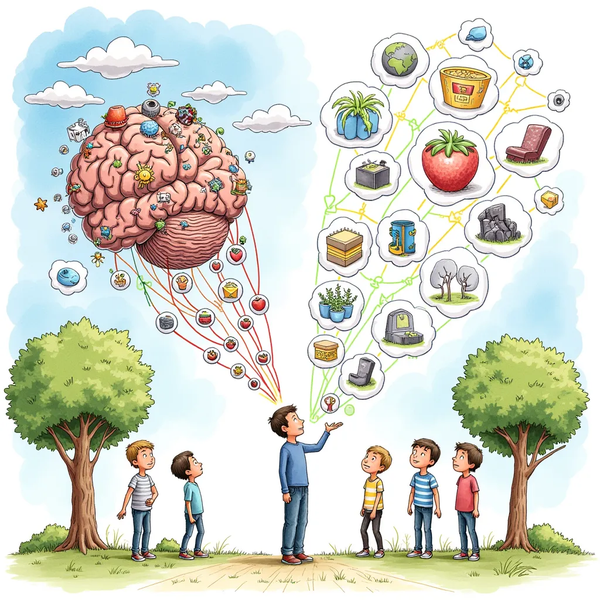How to fight against inertia to change the world
Changing the world requires knowing how to fight against inertia in all its shapes and forms. Here's how.

Introduction
The world around us evolves at a breathtaking pace. It happens so fast that we all struggle keeping up with the changes. It is also true for people who are passionate about or even experts in a specific domain/topic. That's just the reality of the world we live in today. Everything changes very quickly. And the trend is bound to accelerate.
This trend is in stark contrast with another reality of our world: changing it is hard. Changing things takes a lot of time and effort, and going through big changes is also challenging. Let's explore these ideas further.
The inertia of the world around us
The rules of the games we are directly or indirectly involved in keep evolving. Keeping up with all the changes is nearly impossible. But influencing and changing those ourselves is even harder.
While things change all the time, being the agent of change is really challenging. Changing things, and thus changing the world, requires a ton of energy. That's because inertia is all around us. People who follow existing rules and processes might complain about those, but will generally continue to apply/respect those for as long as they can, even if they suffer from a lot of friction. People who did something in a certain way for a long time have a hard time conceiving and/or accepting a different approach. In the same vein, organizations also move slowly. The larger they are, the slower they're able to move. Changing organizations is tough. Zooming out even more, governments and countries move at an even slower pace. Change takes years or even decades (e.g., education systems). And the whole world is even slower as a whole. For instance, we know we need to preserve the environment to save the planet, and thus ourselves, but "we" struggle to change our ways and keep getting closer and closer to the no return point.
The larger the change you want to make and the larger the group of involved people is, the harder the change is to turn into reality.
The inertia of the world implies that there is a lot of resistance against change. That being said, it doesn't mean that it's impossible to change the world. It's just important to understand the inherent inertia, and to accept that change will take a long time and will require lots of efforts.
On the other hand, inertia can also be a powerful and positive force that we can leverage. When something moves in some direction, inertia keeps it moving in that direction. This applies not only to real-world objects, but also to ideas. Once you get the ball rolling (e.g., with a tiny change), you have the opportunity to leverage the inertia to perform additional changes, with stronger and stronger effects. That's why changing small things can have a huge long-term impact.
Change, from idea to reality
There are many challenges to overcome in order for change to happen. First off, we need to understand the change we want to see in the world. It could be a small or big thing, but until we know clearly what should change and how, there's no way to make progress. We need to fully understand and be able to clearly explain the change we want to see in the world. Moreover, we need to be clear about the why.
Second, we need to understand how the change could/should/must happen. If possible, we need to be able to explain exactly how to implement the change. If we can't, then we need to have a clear plan to get to that point. Everything starts with clarity and vision.
Third, we need to know who is actually able to turn our idea into a reality in the world. If I want to change my clothes, it's not very complicated. I can open my closet, pick up the clothes or buy new ones and change. That change just depends on me. It doesn't mean that it will be easy, but it won't be as difficult as other types of change. Changes that depend on other people, organizations, governments or even the rest of the world are much harder to make. It gets harder as the impact is larger.
Fourth, we need to communicate and convince about the change we want. Buy-in is almost always necessary. We need to explain our ideas/motivations/rationale to all the relevant parties. We need to create/instill a shared vision. Communication is required to convince that the change we propose does make sense, that it would actually improve the status quo. Communicating and convincing takes a lot of skills, time and energy. We sometimes need to convince many people in order for them to be able/willing to move along. Other people's inertia is difficult to overcome, but rarely impossible.
Many times, we don't only need to communicate and convince. We need to help turn the change into reality. Depending on the change, it could be easy or really hard. That's where will and determination come into play. Beyond the inertia of the world, we need to fight against the inertia of other people, and to motivate ourselves. But motivation is the easy part. All it requires is action. We need to act, be focused, and to come back at it again and again until we reach our goal(s). The divide and conquer approach is best, as each step forward means progress, and progress helps keeping you and other people motivated.
Break the mountain, one grain of sand at a time
Conclusion
There's more of course, but as long as you have a clear vision, buy-in from stakeholders, motivation, and determination, nothing can stop you.
So, how do you plan to change the world around you?
About Sébastien
I am Sébastien Dubois. You can follow me on X 🐦 and on BlueSky 🦋.
I am an author, founder, and coach. I write books and articles about Knowledge Work, Personal Knowledge Management, Note-taking, Lifelong Learning, Personal Organization, and Zen Productivity. I also craft lovely digital products . You can learn more about my projects here.
If you want to follow my work, then become a member.
Ready to get to the next level?
To embark on your Knowledge Management journey, consider investing in resources that will equip you with the tools and strategies you need. Check out the Obsidian Starter Kit and the accompanying video course. It will give you a rock-solid starting point for your note-taking and Knowledge Management efforts.
If you want to take a more holistic approach, then the Knowledge Worker Kit is for you. It covers PKM, but expands into productivity, personal organization, project/task management, and more:
If you are in a hurry, then do not hesitate to book a coaching session with me:





